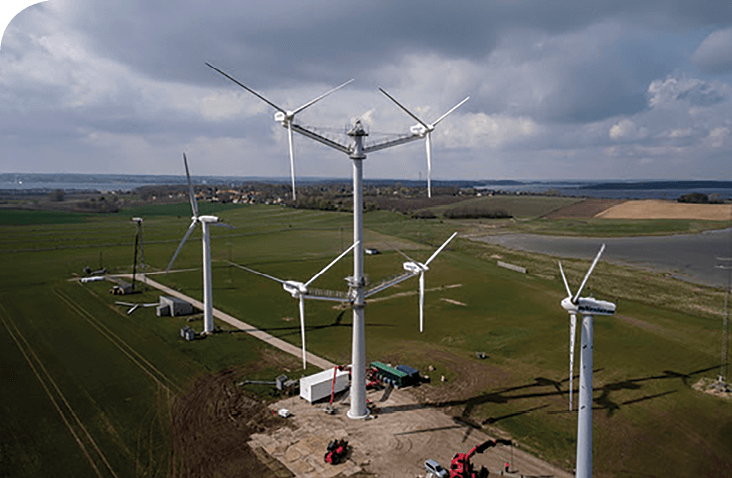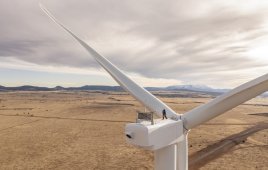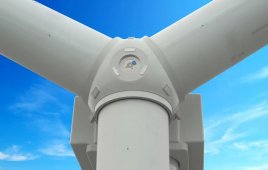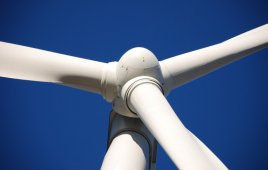This machine is the Windpower Engineering & Development’s Turbine of the Month for June 2017.
Finally, a company has broken the tradition of one axis, one rotor, on one tower. Bigger and more reliable is probably the way of the future, but it is good to see a company experiment with a utility-scale turbine that is a little different. In this case, it is the novel Vestas four-rotor turbine and for the lack of a catchier name, we’ll call it the 4V29. For its financial guts and technical chops to build something different, and not just in a computer simulation, we nominate Danish wind-turbine manufacturer’s quad as the Turbine of the month.
Vestas is not the first to design a large multi-rotor system, but to our knowledge, it is the first to build one. The 4V29 demonstrator uses four refurbished V29-225 kW nacelles, a model which the company produced from 1990 to 1997.
Rotor arms that hold each nacelle are braced with steel tension cables that offer a flexible, lightweight mount that can reduce mass and loads. The prototype’s maximum tip height of 74m is notably shorter than many of today’s turbines but it meets Risø’s (the national testing lab in Denmark) building height restriction of 75m.
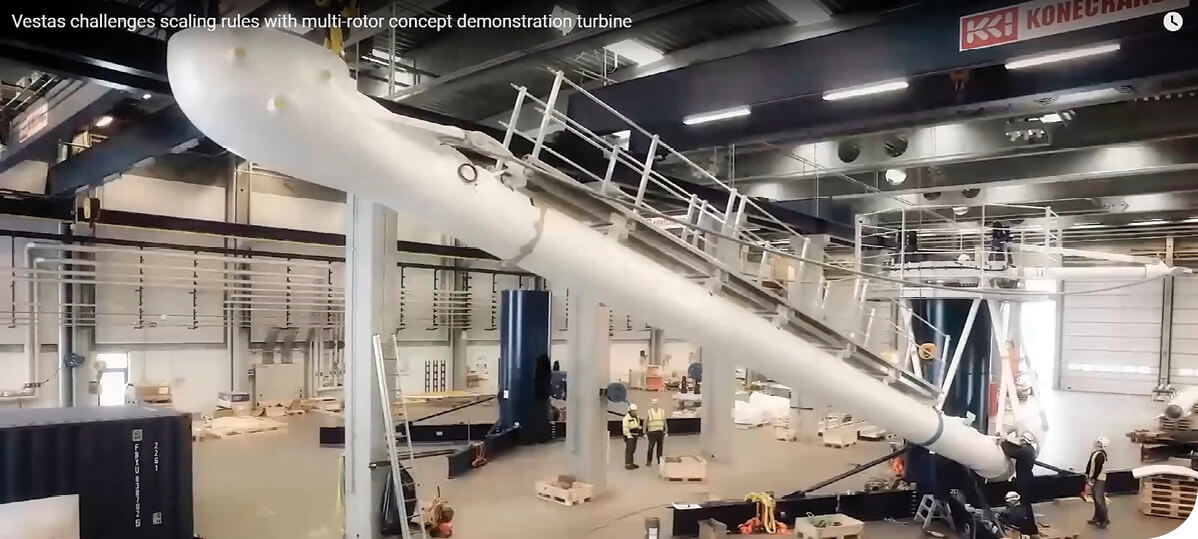
To see the tower and support arm under construction, watch the video here: http://tinyurl.com/4V29underconstruction
A LiDAR wind sensor at the tower top measures the wind field in front of the rotors. Also, when controls detect wind shear, different directions at a different altitude, the turbines can respond accordingly. In a conventional turbine with a 100m rotor, its response is a compromise, which tends to stress the blades.
Goals of the experiment are to learn more about solving aerodynamic, transport, and structural problems of huge conventional turbines. For instance, rotors spinning within 1.5m of each other could uncover surprises. Transporting large turbines on land is getting more challenging. Shipping smaller 4V29 components would overcome some of the problems. And lastly, the tower may reveal unexpected structural vibrations.
“The ultimate goal is to assess if we can build an even more cost-efficient turbine by challenging the scaling rules,” said Jorge Magalhaes, Senior VP, Vestas Innovation & Concepts, in a press statement.
Although the Danes are good engineers, they have selected a control system that uses the U.S. Department of Energy’s Wind Program and control software developed by engineers at Sandia National Laboratories. Dr. Jon White leads Sandia’s Wind Plant Optimization Team and explains that the lab created a hardware-in-the-loop system and an open-source rapidly reconfigurable control environment to test and deploy innovative technology at the Lab’s Scaled Wind Farm Technology facility in Texas.
White says the hardware-in-the-loop system consists of a:
• Control computer and turbine software replica,
• Computer emulating inputs to the sensor and feeding them to the control computer, and
• A scaled-down generator emulates the turbine’s drivetrain and wind loading.
This system lets developers test and configure the controllers to meet standard wind-industry procedures before installation.
The Vestas prototype, a not-for-sale demonstrator, has finished construction and is now in operation at the Risø test site near Roskilde, Denmark. Several good videos are online. One is here: http://tinyurl.com/vestas4V29
Filed Under: Projects, Turbines

